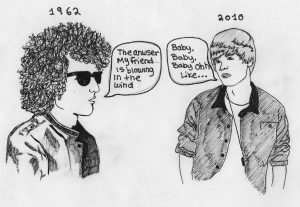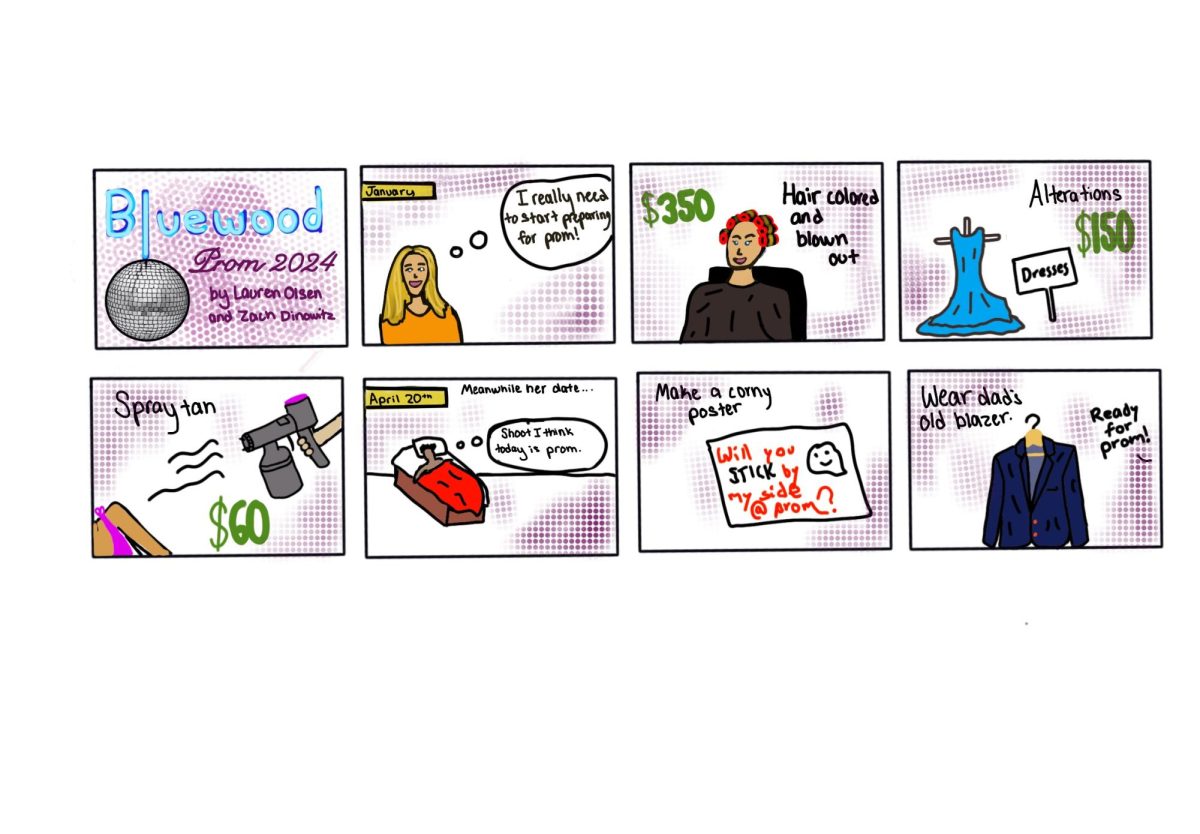Since the day my father’s old vinyl started spinning on his Grundig record player, the music of the ‘50s, ‘60s, and ‘70s has enraptured me like no other. It was all I could listen to then, and it’s mostly all I can stand to listen to today. People continue to tell me that I was born in the wrong generation, and that music is just a matter of taste and preference. Yet my experience suggests that there has to be more to it. Popular, Billboard-topping music today generally lacks creativity, ingenuity, lyrical and musical depth, experimental spirit, and in many cases, talent.
Harsh, I know.
To the high school reader, I’m sure my opinion comes off as ignorant, and frankly, wrong.
In 1965, Bob Dylan demonstrated this ingenuity when he released “Like a Rolling Stone,” which forever shattered all preconceived notions of what a single could be in terms of length, sound, and subject matter. The six-minute gem’s social commentary, raw instrumentation and vocals, and lyrical depth changed music forever, and broke barriers in the potential of pop music.

Music during the ‘50s, ‘60s and ‘70s used to cleverly convey the experience of being in love, or creatively critique contemporary issues. Now, however, it serves as a vehicle to either objectify women, glorify violence, extol drug use, exalt material wealth, or superficially discuss a relationship or breakup.
Throughout the ‘50s, ‘60s, and ‘70s, audiences did not need to look hard to find music with unprocessed, innovative instrumentation. Today, consumers of mainstream music struggle to even find a real instrument in a recording or performance.
Additionally, music today is written by some of the same select behind-the-scene songwriters, which is evident in the unoriginality of many pop songs. Max Martin, for example, has written and co-written 21 Billboard Hot 100 number-one hits since 1999, third only to Paul McCartney and John Lennon of the Beatles. Among Martin’s hits include songs with similar melodies, chord patterns, rhythms and instrumentation.
Since the public likes to believe that pop artists write their own songs, Martin has remained comfortable in the background of the music scene. The music industry and its consumers have made a statement that the looks and personality of pop stars are more important to them than the music they create and its artistic value.
As large record companies are increasing their control of artists and the rest of the music industry, it has become harder for artists affiliated with major record labels to maintain their artistic integrity and creativity.
Ray Charles, for example, established himself as one of the finest musicians of the ‘50s and ‘60s, with his prodigious piano skills and impeccable phrasing. Charles combined gospel, R&B, soul and jazz music in an inventive way, earning himself a large contract with ABC-Paramount Records, as well as a dedicated fanbase. In 1962, Charles released “Modern Sounds in Country and Western Music,” where he approached a completely new genre with his own soulful twist. ABC-Paramount’s faith in Charles and his artistic vision helped make it one of the most well-known and successful albums of all time.
Nowadays, record companies have disregarded commitment to artistic growth and development and are quick to cut an artist loose if they try something that may not be as profitable as the label prefers. Artists do not have the time to flourish musically simply because the record companies won’t let them.
Record labels look for a profitable formula and attempt to repeat it once they achieve success. That’s why so many of the songs we hear today have similar melodies, similar lyrics and similar tempos. That’s why so many of the popular songs today are written by such a small group of songwriters—the writers have mastered the art of writing a pop song that sells, and they continue to write songs using the same formula.
These same record companies also have a large sway on radio stations, which are paid to play songs by artists on a particular label. This explains why on popular stations today, the same playlist of songs is repeated again and again until it’s ingrained in the minds of the consumers.
Despite all that is wrong with the industry, listeners are also at fault. If you buy into loud, booming bass and lyrics that objectify women and glorify violence, it’s what you’re going to get. If you hold artists to a high standard and listen more critically, the quality of music you discover will be higher. In order to enact change, people need to stop settling for bad music. We need to revolt against the music of today, or music will never be what it once was.

















